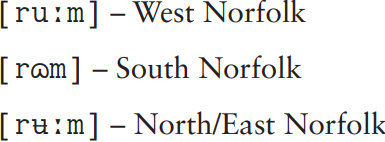
Koinés
 المؤلف:
David Hornsby
المؤلف:
David Hornsby
 المصدر:
Linguistics A complete introduction
المصدر:
Linguistics A complete introduction
 الجزء والصفحة:
280-13
الجزء والصفحة:
280-13
 2024-01-04
2024-01-04
 2041
2041
Koinés
Koinés are new compromise varieties which emerge from contact between speakers of different varieties. Koinéization is driven primarily by two processes:
• Levelling – the retention of forms which are used by a large number of speakers
• Simplification – the retention of forms which are morphologically simple or more regular, and therefore easier for post-adolescent learners to acquire.
Two other contact outcomes need also to be mentioned. In the first, incomplete accommodation between speakers of different dialects results in the creation of interdialect forms. In northern France, for example, contact between speakers of dialect and standard French has produced new compromise regional French forms, which were present in neither:

A similar compromise is evident in the lexical interdialect form take out, used in north-western England and the Midlands for a meal bought to be consumed off the premises. This form combines one element of the southern variant take away and one from the Scottish/north-eastern form carry out.
Finally, instead of being lost in the reduction process, variants can be reallocated to a new status. Trudgill suggests that this has happened in Norwich with three different variants of the ROOM vowel, originally associated with different parts of Norfolk:

The population of Norwich grew exponentially during the nineteenth century, drawing in migrants from the rural hinterland, and bringing all of these Norfolk variants to the urban dialect mix. None, however, won out over the others: instead they were reallocated as social status markers within the city. The west Norfolk [u:] form, which corresponds to that of RP, has the highest status of the three, followed by south Norfolk  and finally the low-status north and east Norfolk form
and finally the low-status north and east Norfolk form  .
.
 الاكثر قراءة في Phonetics
الاكثر قراءة في Phonetics
 اخر الاخبار
اخر الاخبار
اخبار العتبة العباسية المقدسة


